Periodontal Examination
A full examination includes charting the depth of the periodontal pockets, measuring gum recession on each tooth, measuring mobility of the teeth and performing an oral cancer screening. A full series of x-rays is needed for a full evaluation. A diagnosis and treatment plan is developed and then presented in easy to understand language.
Bacterial Sampling
If active disease is present, a sample of pocket fluid is taken and sent to the USC Microbiology Laboratory for testing. A number of specific bacteria have been implicated in active bone loss. These bacteria can be treated by specific antibiotics. When these specific bad bacterial have been eliminated, the gum tissue responds more favorably than if they are still present around the teeth.
Scaling and/or Root Planing
This advanced cleaning usually requires that we make the tissue numb in order to get to the bottom of the gum pocket to remove hard debris. We have numbing gels that do not require the use of a needle to accomplish this numbing. Sometimes antibiotics are prescribed at the same time as root planing to kill the bone eating bacteria. We usually cannot do the whole mouth at one time, so a number of visits are necessary. A slight over-the-counter pain medication may be necessary when the gums wake up, but you can go back to work after each visit. Softer foods may be needed for the next day or so since the teeth may be more sensitive. A reevaluation of gum depth will be completed six weeks after root planing.
Periodontal Maintenance Procedure (PMP)Scaling and/or Root Planning
A dental cleaning visit at the periodontal office includes a discussion of your current general and dental health, gum pocket measurements, evaluation of tissue tone and tooth mobility along with thorough tooth cleaning. Should the hygienist note any gum changes since your last cleaning, the periodontist is asked for a diagnosis and suggested new treatment plan. Sometimes that requires an interim evaluation based on the changes noted. This exam usually takes place six weeks after your dental cleaning.
Bite adjustment or stabilization
When there is an isolated gum line or bone problem, sometimes this has occurred because this tooth has been traumatized by a bad bite. That tooth can be adjusted and the problem may get better. When multiple teeth are involved, all the teeth may benefit by an adjustment. If the trauma can be determined to be clenching or grinding of the teeth, a nightguard may be the answer. Finally, if you have a small number of teeth that are very loose but do not have deep pockets, it may be possible to wire (stabilize) them together for added support.
Bone grafting
Tissue engineering science has not yet perfected growing bone in the mouth, but we are getting there. When the bone defect is of a certain shape, bone growth can be quite predictable. At other times, the research show that success will probably not occur. The most advanced product we have now and are using to achieve bone growth is GEM 21S manufactured by Osteohealth. You can obtain more information at www.osteohealth.com.
Crown lengthening
Functional: When a tooth has fractured off at the gum line, decay is at the level of the bone, or sometimes when a new crown needs to be made, there may not be enough visible tooth for the general dentist to build a new tooth on. Crown lengthening, in these cases, is the removal of healthy bone to expose healthy tooth underneath, allowing the dentist to proceed with dental work.
Esthetic: Some people have a “gummy” smile and would like to change that. A periodontist is skilled in removing the “excess” gum tissue so that more tooth shows when you smile.
Pocket Reduction surgery
When the depth of the pocket (turtle neck) is too deep around the tooth and we have tried to decrease the depth by root planing, antibiotic therapy, bite adjustment and/or bite stabilization (see other services listed), it may be necessary to trim the extra height of tissue so that you can now clean to the base of the pocket. If all pockets are cleansable, the chances of further bone loss are decreased. Routine exams and cleanings will always be necessary since periodontal disease is controllable, not curable and will probably recur in certain areas throughout your lifetime.
Ridge Augmentation
When a tooth has been extracted, the ridge area may shrink back leaving a large, dark space around the new false tooth. Tissue can be placed in this area to fill in the black space and help the false tooth appear more real, as if it is coming from the gum line.
Tissue grafting – Connective Tissue or Free Gingival
A tooth can appear “too long” for a number of reasons. Sometimes, with tooth eruption, the right amount of tissue didn’t follow the tooth. Other times, teeth erupt at different rates and there is a “roller coaster” of tissue heights. Tissue can be added to the longer tooth to make it shorter. At other times, recession (stripping of the gum line) may have occurred leading to the longer looking tooth. Past periodontal surgery may also be the reason for the change. Tissue can be added to the root of the tooth to correct the height of the gum line.
